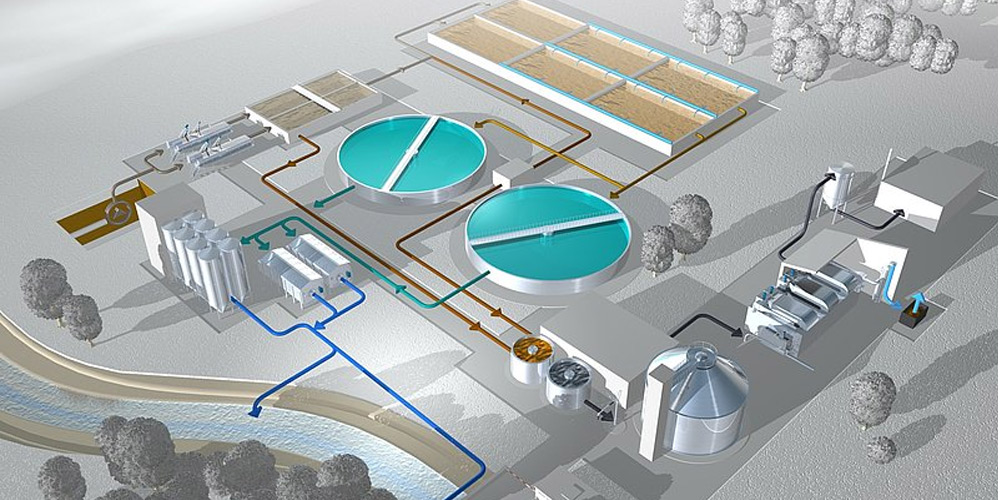Саркынды сууларды тазалоо процессинде полиакриламид (PAM) маанилүүфлокулянт, суунун сапатын жогорулатуу үчүн кеңири колдонулат. Бирок, ашыкча PAM дозасы көп учурда пайда болот, бул канализацияны тазалоонун натыйжалуулугун гана эмес, айлана-чөйрөгө терс таасирин тийгизиши мүмкүн. Бул макалада ашыкча PAM дозалоо маселелерин кантип аныктоо, алардын себептерин талдоо жана тиешелүү чечимдерди сунуш кылуу каралат.
Ашыкча PAM дозалоонун белгилери
ашыкча PAM кошулганда, төмөнкү маселелер пайда болушу мүмкүн:
Начар флокуляция эффектиси: PAM дозасынын жогорулашына карабастан, суу булуң бойдон калууда жана флокуляция эффектиси жетишсиз.
Анормалдуу чөкмө: Резервуардагы чөкмө майдаланып, бош болуп, тунушу кыйын болуп калат.
Фильтрдин бүтөлүшү: АшыкчаPAM флокулянтысуунун илешкектүүлүгүн жогорулатып, чыпка жана түтүктөрдүн бүтөлүшүнө алып келип, тез-тез тазалоону талап кылат.
Саркынды суулардын сапатынын начарлашы: Агындылардын сапаты олуттуу түрдө төмөндөп, булгоочу заттардын деңгээли стандарттардан ашат. Ашыкча PAM суунун молекулярдык түзүлүшүнө таасир этет, КОК жана BOD мазмунун жогорулатат, органикалык заттардын деградациясын азайтат жана суунун сапатын начарлатат. PAM суу микроорганизмдерине да таасир этип, жыт маселелерин жаратышы мүмкүн.
Ашыкча PAM дозасын себептери
Тажрыйбанын жана түшүнүктүн жоктугу: Операторлор илимий PAM дозалоо билими жок жана чектелген тажрыйбага гана таянышат.
Жабдуу көйгөйлөр: өлчөө насосунун же чыгым өлчөгүчтүн иштебей калышы же катасы туура эмес дозалоого алып келет.
Суунун сапатынын өзгөрүшү: Кирүүчү суунун сапатынын олуттуу өзгөрүүлөрү PAM дозасын көзөмөлдөөнү кыйындатат.
Операциялык каталар: Оператордун каталары же жазуу каталары ашыкча дозага алып келет.
Чечимдер
ашыкча PAM дозасын чечүү үчүн, төмөнкү чараларды карап көрөлү:
Окутууларды күчөтүү: Операторлорго алардын түшүнүгүн жана PAM дозалоодо иштөө жөндөмдүүлүгүн жогорулатуу үчүн кесиптик билим бериңиз. Туура PAM дозасы оптималдуу флокуляция эффекттерин камсыз кылат.
Жабдууларды тейлөөнү оптималдаштыруу: тактыкты жана ишенимдүүлүктү камсыз кылуу үчүн өлчөө насосторун, чыгым өлчөгүчтөрдү жана башка жабдууларды үзгүлтүксүз текшерип, тейлөө.
Суунун сапатына мониторингди жакшыртуу: Келип жаткан суунун сапатынын өзгөрүшүн дароо аныктоо үчүн суунун сапатына мониторинг жүргүзүү жыштыгын жогорулатуу.
Иштөө спецификацияларын түзүү: PAM кошуу кадамдарын жана сактык чараларын чагылдырган деталдуу операциялык процедураларды иштеп чыгуу.
Интеллектуалдык башкарууну киргизүү: адамдын катасын азайтуу үчүн автоматтык PAM дозалоо үчүн акылдуу башкаруу системасын ишке ашыруу.
Дозаны өз убагында тууралоо: Суунун сапатына мониторинг жүргүзүү жана иш жүзүндөгү операциялардын негизинде, флокуляциянын туруктуу эффекттерин жана агынды суунун сапатын сактоо үчүн PAM дозасын тез арада тууралаңыз.
Байланыш жана кызматташтыкты чыңдоо: Маалыматтын үзгүлтүксүз агымын камсыз кылуу жана ашыкча PAM дозалоо маселелерин биргелешип чечүү үчүн бөлүмдөр арасында байланышты жана кызматташтыкты өркүндөтүңүз.
Жыйынтык жана сунуштар
Ашыкча PAM дозасын алдын алуу үчүн, саркынды сууларды тазалоодо PAM кошулушун кылдаттык менен көзөмөлдөө зарыл. Дозалоо ар кандай көз караштардан байкалып, талданышы керек, ал эми адистер көйгөйлөрдү тез арада аныктап, чечиши керек. Ашыкча PAM дозасын жумшартуу үчүн окутууну күчөтүүнү, операцияларды стандартташтырууну, жабдууларды тейлөөнү оптималдаштырууну, суунун сапатын көзөмөлдөөнү жакшыртууну жана акылдуу башкаруу системаларын киргизүүнү карап көрөлү. Бул чаралар аркылуу PAM дозасын эффективдүү контролдоого, саркынды сууларды тазалоонун натыйжалуулугун жогорулатууга жана айлана-чөйрөнүн сапатын коргоого болот.
Посттун убактысы: 25-окт.2024


